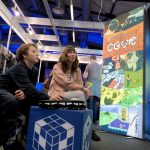It was amazing to be back at GameOn with our students and their games after several years. The last time we were, there was back in 2022 when it was organized together with Comic Con Baltics. GameOn is one of the biggest video game conventions in the Baltics. From the 18th to the 20th of October, it was three days of informative talks, meeting a lot of video game developers, and trying out a huge variety of video games, from student games and indie to AAA. Not to mention the many esports competitions, cosplay, cool video game merch, and a full live video game music orchestra concert!
 |
 |
 |
 |
 |
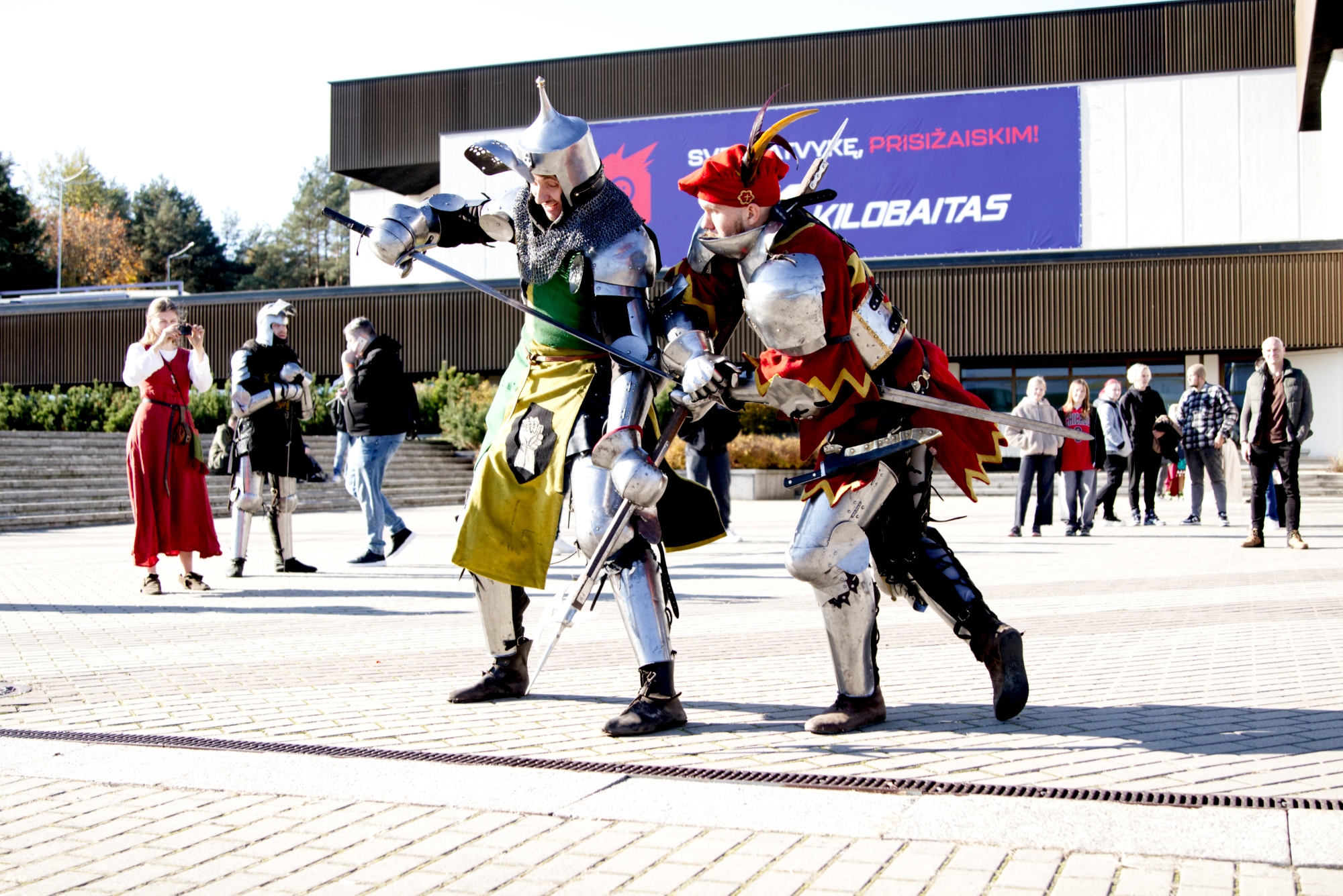 |
 |
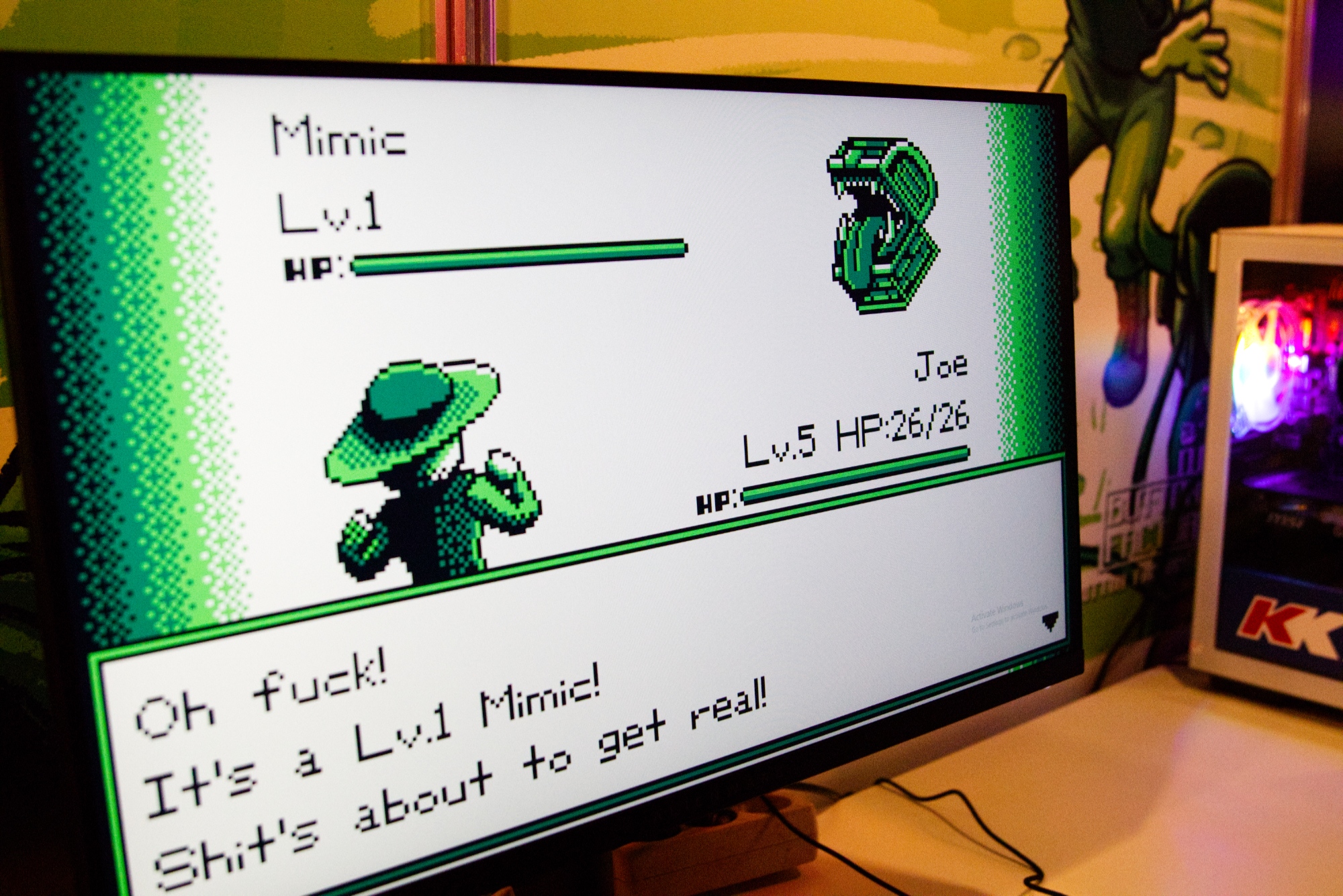 |
Our Showcase
We find that our students who aspire to be professional video game developers, benefit a lot through showcasing their games at expos. There are many learning opportunities when doing it! First, they see other people play their games. Seeing the different people play gives more insight into what kind of an experience is actually designed in the game – this is the key difficulty in mastering game design. Secondly, one can hone in on the target audience. You might think that you designed a game for people like yourself, but then it turns out that young kids really love your game, even more than the people who you consider similar to yourself. Thirdly, the entire experience is, of course, a tough test for the game itself. Our students found several issues both code- and design-wise. As the event lasted several days, new builds were cooked up on the late nights at the hotel room.
Our area this time was a bit larger than before. Two years ago we saw a Lithuanian Video Games booth, where screens were placed and duplicated to both inside and outside the area. This gave an opportunity for people to play the games inside and other visitors to see the gameplay without having to look over the player’s shoulder. So, this time we wanted to experiment with this ourselves and duplicated both Mine Sweep Battle and EleBall the similar way. This did introduce new interesting issues, though, as people thought that the screens directed outside the area are touch screens and tried to play the games by touching them. It also seemed people were a bit more hesitant to enter the booth to play. However, it was visually very effective, and most passerby did get it that they are looking at live gameplay from within the booth. Overall, this is something we feel we would like to experiment more with, as it did feel unique and eye-catching.
 |
 |
 |
 |
 |
 |
 |
 |
EleBall
EleBall is a very fun game with a very simple game mechanic – just balance Eddie the Elephant on a ball. While the premise is simple, it is difficult to master. As the game progresses, you have to catch different props and jump on platforms, while still, of course, balancing on a ball. The game features a touching story about Eddie and competing in the entertainment industry against a robotic AI elephant. The game is available in many different languages, including Lithuanian. For GameOn, our student and the author of the game Timo Jairus made, among other improvements, a quick language select menu. So, when starting a game, the players could quickly pick between English, Lithuanian, and Estonian. Wishlist on Steam.
 |
 |
Mine Sweep Battle
Everyone is nostalgic about Minesweeper, but would such a game be popular in the modern fast-paced world? Mine Sweep Battle is all about combining the mechanics from Minesweeper and Bomberman to create a unique competitive fast-paced multiplayer video game. You not only mark mines, but you defuse them, opening up more of the game space. When you take the risk and open an unmined tile, you may find a power-up. Among these is a bomb, which you can use to stun other players. Each successful action rewards you with points to win the match. Play Now on Itch.io.
 |
 |
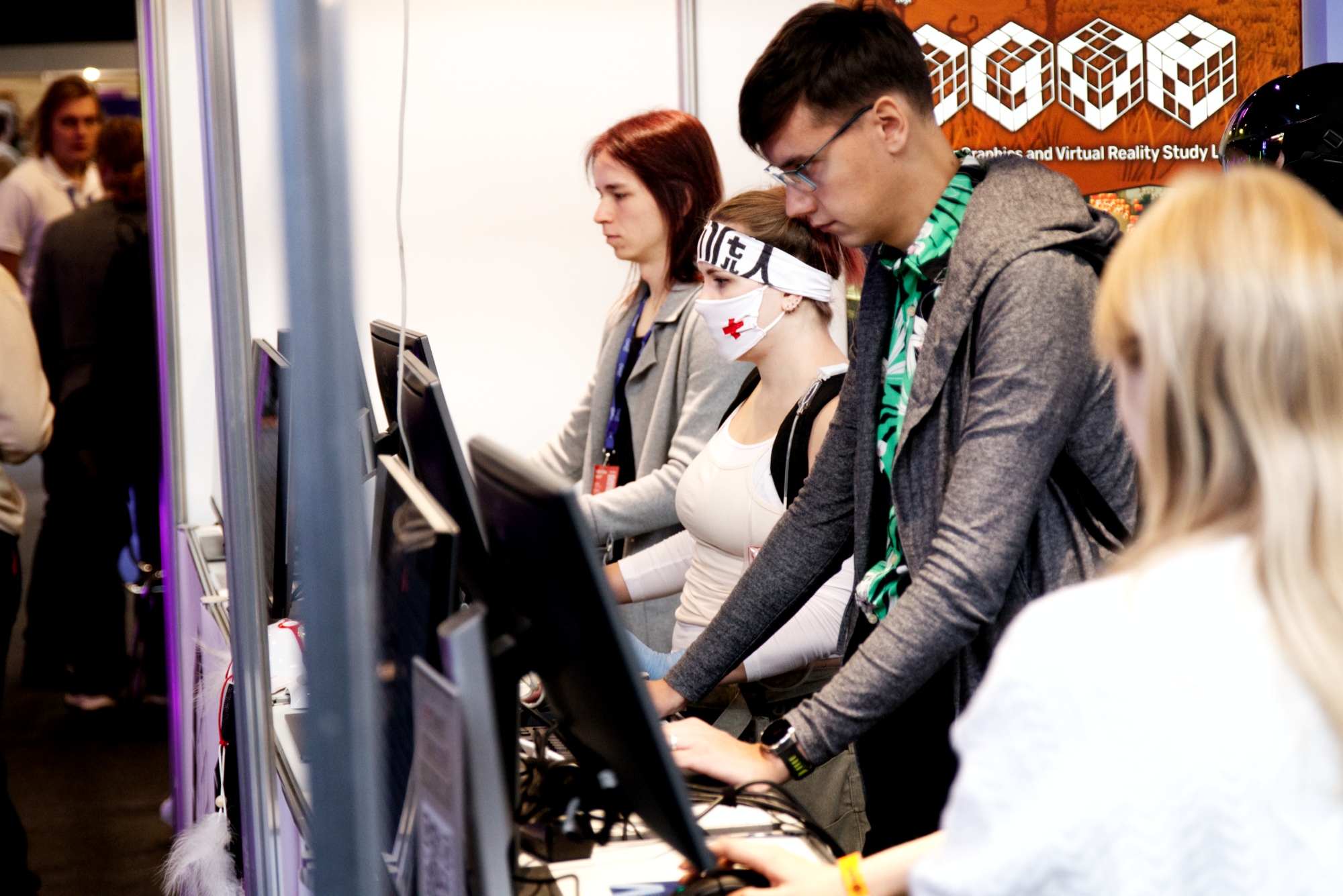 |
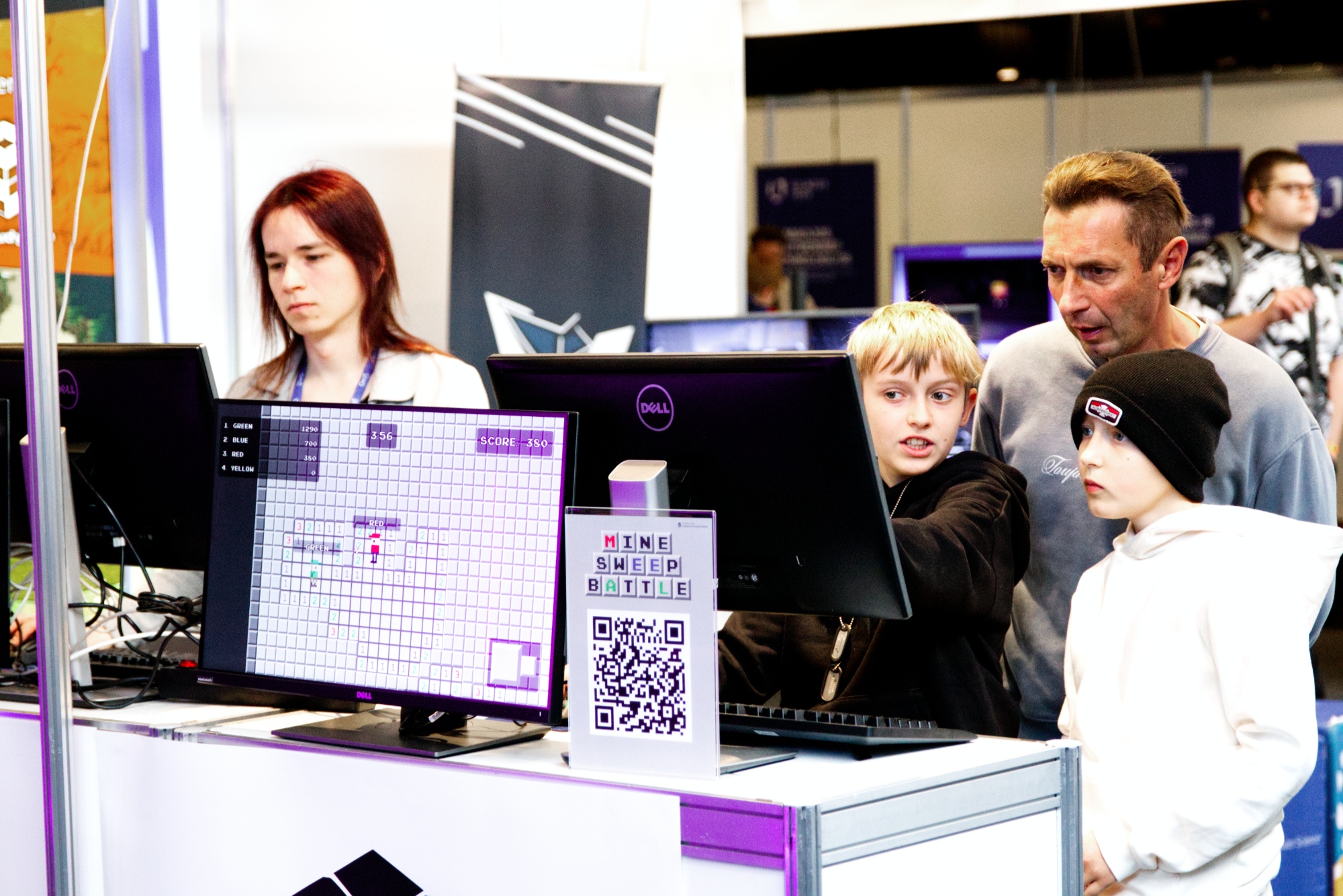 |
 |
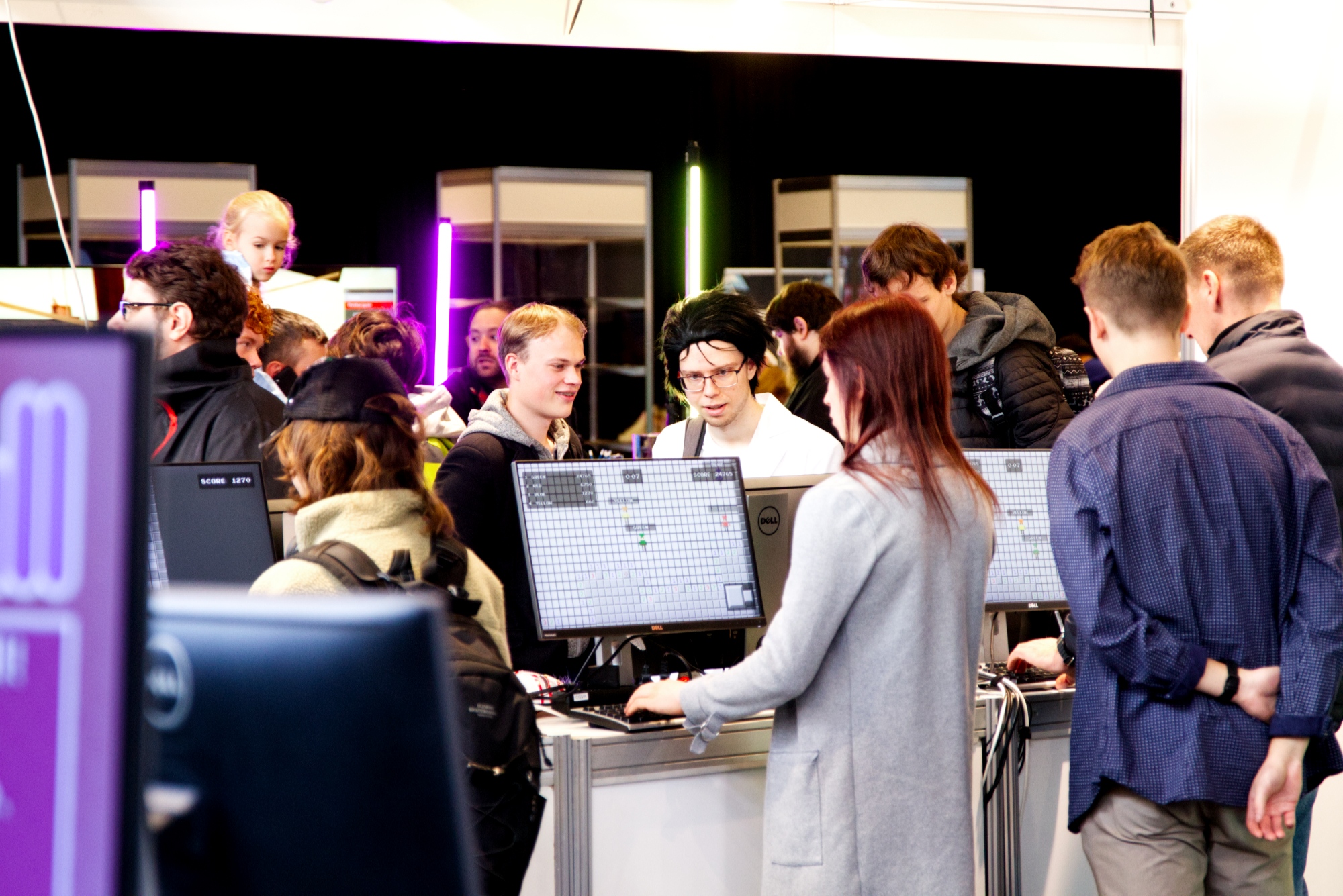 |
 |
 |
Delivery Mayhem
Delivery Mayhem is a video game being developed by our alumni. Inspired by old car battle games like Twisted Metal, Death Rally, and Carmageddon, this crazy hotseat multiplayer party game has you delivering packages and blowing up the competition with rockets, mines, and machine guns. The matches are short and intense, the competitive players manage to deliver only a few packages within a match. There are different cars, each with their own gameplay-affecting peculiarities. Wishlist on Steam.
 |
 |
 |
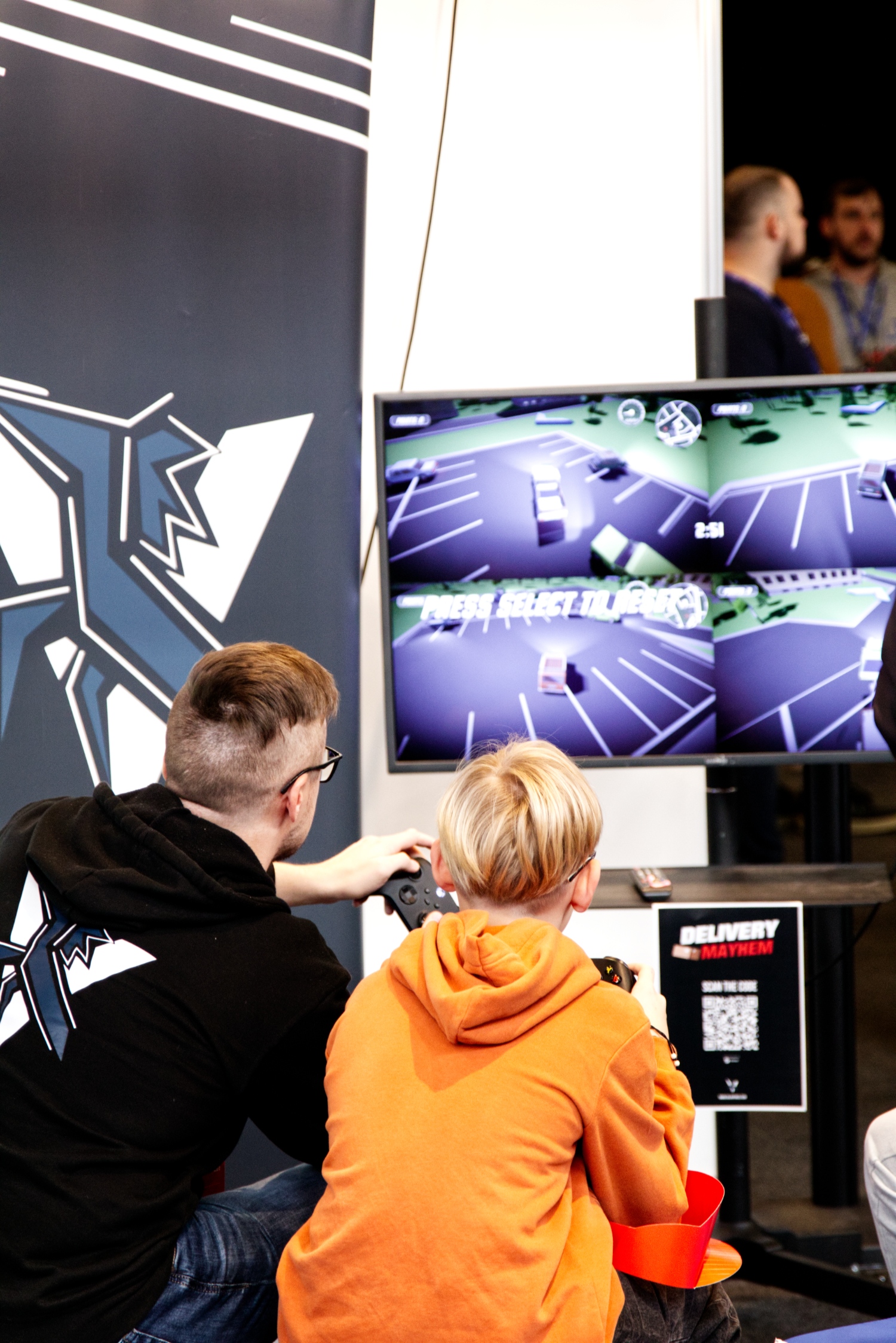 |
The Talks
There were three days worth of talks in two different halls. It was impossible to listen all of them. Here is a pick of more thought‑provoking ones that we happened to listen.
Vaidas Gecevičius from CHARK Studio was talking about AI vs Creativity. The current generative AI is very limiting in its ability to control fine details. Even though, it is a great source for mood, concept, and inspiration, production assets need a lot more control from the designers. He also mentioned, very interestingly, that senior programmers no longer want to take any juniors because generative AI writes better code faster than the juniors do. We feel that this really calls for universities to step up. The graduates, including our graduates, must be able to write better code or benefit in some other useful way, if they expect to become hired, or, more importantly, if we expect them to be hireable.
 |
Kamil Pohl and Patryk Kin from Flying Wild Hog explained how the video game industry and movie industry are slowly merging together. Video games are becoming much more cinematic, characters more expressive, the cinematography more on par. But also movies are experimenting with trying to be more interactive with the audience.
 |
 |
Alexey Sityanov, the game designer and story writer of S.T.A.L.K.E.R. talked about how they ended up designing and implementing the simulation parts of the game. The game was initially supposed to have been quite linear like Half-Life 2. Alexey explained his thought process in how a life simulation made more sense, even though most of the team was initially against it. It did not add to their confidence that they had never made anything like that before. For some of the team, it was their very first game.
 |
 |
Daniel Noah Pharos from Novaquark shared his story of creating video game music for the Crowns and Pawns game. Especially the part, where he added traditional Lithuanian themes and even had to acquire and learn a Lithuanian folk instrument birbynė.
 |
 |
Leene Künnap from Placeholder Gameworks shared her very personal story of how she managed to make and release a quite successful indie game. She explained how you should not be afraid of making games and how to make your game with limited resources.
 |
 |
Patrikas Armalis and Eligijus Kiudys from Starbloom explained how they moved their game from Unity to Godot – something a lot of developers have been thinking about for the past year or so. They explained the issues faced when taking this on and the benefit gained from it.
 |
 |
Memorable Games
Oh man, we wishlisted so many cool games! There are a few that we want to mention here.
Tempo Punk – The expo setup of this rhythm-shooter game was phenomenal. They had a leaderboard and everyone who got the score over 200K, won a copy of the game. Such competitions where you instantly get a reward after reaching a specific goal, work really well! Several of our students went there on different days to get that highscore.
Chains of Freedom – This was a quite interesting turn-based tactical combat game that is currently in the works at Nordcurrent. The world-building was immersive and intriguing. Basically, a group of soldiers of some questionable regime go to assassinate some terrorist/rebel leader but their helicopter crashes. They then encounter some quite unexpected situations.
Halve – It’s a platformer, where there is also a duplicated version of player character, mirrored horizontally in the game world. What made this game unique was both the very beautiful look as well as the smooth learning curve. There was quite a lot of gameplay where things felt slightly challenging but not too difficult to overcome. Really good player flow!
Rivencrest – This was the game that the converting from Unity to Godot talk was about. The game itself is a turn-based tactical combat game, but it feels quite polished. The authors also explained that it is planned to have a lot of Lithuanian mythology in it. What we loved was that when idling in the main menu, a video of the gameplay started. This is something that works really well in expos!
Crackernuts – An adventure game with a very unique look and story! What it looked like was that there was some mysterious evil things happening in a fantasy world. Things like people’s heads being switched with animal heads. Crackernuts was a very creative game that surprises and keeps you wanting to know what happens next (and what has happened before to make everything weird like that).
 |
 |
 |
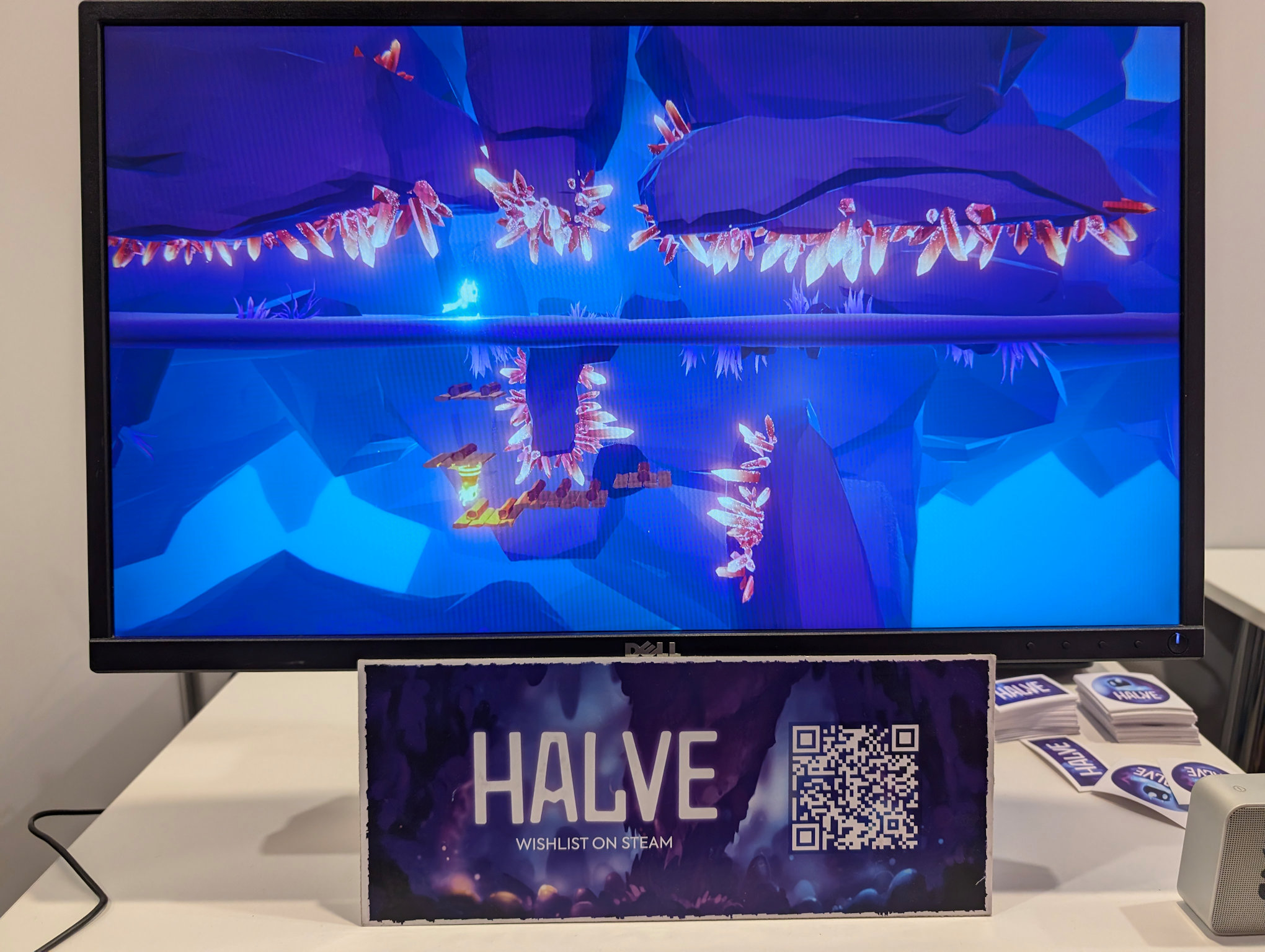 |
 |
 |
All in all, the event was very inspiring and useful for us and our students. There is a lot still to learn!
 |

